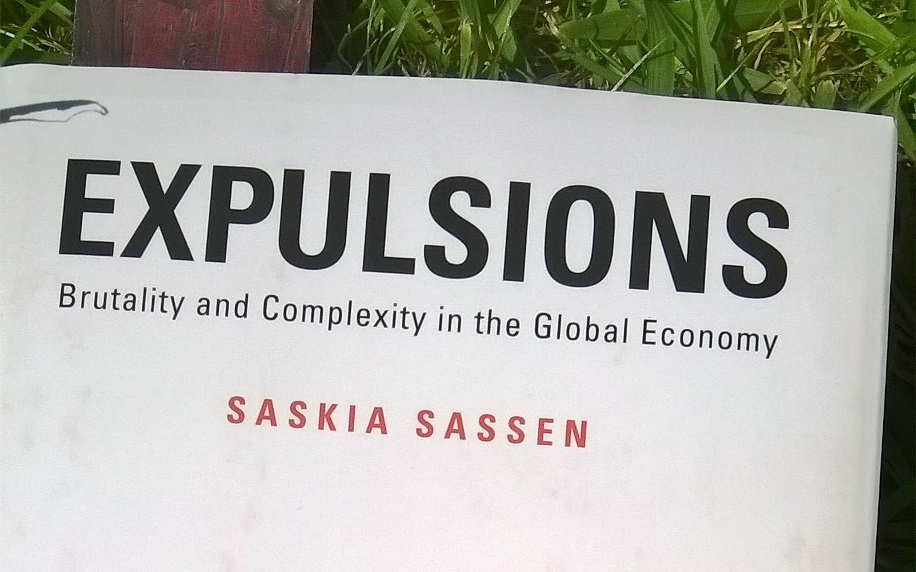Just reading Saskia Sassen’s “Expulsions – Brutality and Complexity in the Global Economy”.
Her point is that, using highly complex forms of knowledge and technology, predatory global capitalism now systematically operates to drive out people, species and the whole living world from the spaces that sustain life and make it possible.
People are driven out of our spaces of livelihood and dwelling, and life itself is being driven from the biosphere.
I am now at the chapter “Dead Land, Dead Water” and have come to the section on fracking. Here:
“Hydraulic fracturing, or ‘fracking’, refers to the process of injecting water, chemicals and silica sand into impermeable rock at high pressure in order to release hydrocarbons (usually natural gas) for fuel. The process uses vast amounts of water and introduces mining chemicals and hydrocarbons into local water tables. Its extreme water usage and poisonous emissions make it highly destructive of the environment. It is worth noting that we are beginning to see bans on frackiing because of its damaging consequences: hydraulic fracturing has been banned in France, South Africa, and the provinces of New South Wales in Australia and Quebec in Canada due to environmental and health concerns.
” A typical fracking site uses between 4 million to 20 million litres of water over its lifetime. All told, fracking and other types of minerals accounted for between 1 and 2 percent of the United States’ non-thermoelectric water consumption in the early 2000s. But fracking has expanded rapidly since then. In Colorado county, fracking accounts for between one-third and two-thirds of total water consumption: ‘A report in March from the Colorado Oil & Gas Conservation Commission (COGCC), which regulates energy development in the state, said that water used for fracking in Colorado totaled about 13,900 acre feet in 2010, and is expected to rise 35 percent to about 18,700 acre feet in 2015.’
“Perhaps the major threat posed by fracking, however, is the type of damage it does to water supplies. The water used in fracking frequently becomes mixed with hydrocarbons or mining debris and chemicals. Chemicals used in a fracking site include ammonia and boric acid, sulfuric acid, trimethyloctadeclammonium chloride and potassium chloride. Furthermore, 10 to 40 percent of all water used in fracking flows back to the surface, where it is either segregated into toxic waste ponds or seeps back into the water table. Water pollution also occurs when natural gas released from impermeable rock seeps into water wells and reservoirs.
“These impacts are set to grow and to affect more and more areas of the world as the practice of fracking increases. It should be noted that much of the information provided by the industry itself presents hydraulic fracturing as a well-established, traditional method. But this is misleading. Despite industry claims of sixty years of experience, the specific type of fracking used today is relatively new. These recently developed methods of hydraulic fracturing incorporate a horizontal drilling technique that uses more water and produces more natural gas. It also creates water pressure fifty to a hundred times greater than found in earlier wells”
Saskia Sassens (2014),Expulsions – Brutality and Complexity in the Global Economy. The Belknap Press of Harvard University Press. Cambridge, Massachusetts

